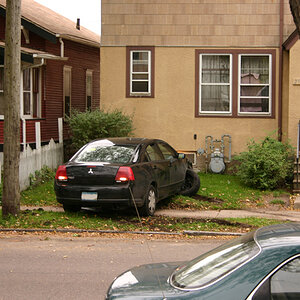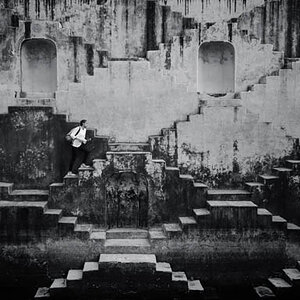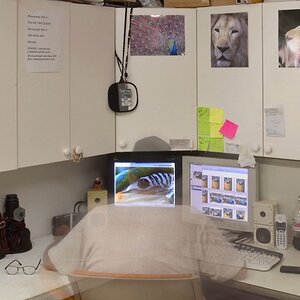Since I've been posting a lot of photos recently, I've also received a great amount of feedback.
few items to ponder
1) Level horizon
This seems to be no.1 and sometimes I just leave it to see if anyone notices.
2) Center focus subject or placing subject in center-too common, uninteresting, use the rule of third, golden rule etc,
3) Cut or amputated subject, object. ie. a toe, leg, tail etc,
4)Overexpose or underexpose, normally part of a photo.
5) Details at corners and/or items that resides at the borders of the photo.
Question time:
OK, now I see a photo of a guy with chopped head as a book cover?
I also see darken background and subject litted (the reason given is to allow viewer to focus on the object/subject)
I also see slated images of landscape "called the Dutch angle" or MTV angle.
Amputated body parts, I see lots of them in magazine, fashion mag in particular.
Funny color tones, again, lots of those in magazines.
Why doesn't the pro follow the rules?
:hugs:
few items to ponder
1) Level horizon
This seems to be no.1 and sometimes I just leave it to see if anyone notices.
2) Center focus subject or placing subject in center-too common, uninteresting, use the rule of third, golden rule etc,
3) Cut or amputated subject, object. ie. a toe, leg, tail etc,
4)Overexpose or underexpose, normally part of a photo.
5) Details at corners and/or items that resides at the borders of the photo.
Question time:
OK, now I see a photo of a guy with chopped head as a book cover?
I also see darken background and subject litted (the reason given is to allow viewer to focus on the object/subject)
I also see slated images of landscape "called the Dutch angle" or MTV angle.
Amputated body parts, I see lots of them in magazine, fashion mag in particular.
Funny color tones, again, lots of those in magazines.
Why doesn't the pro follow the rules?
:hugs:













